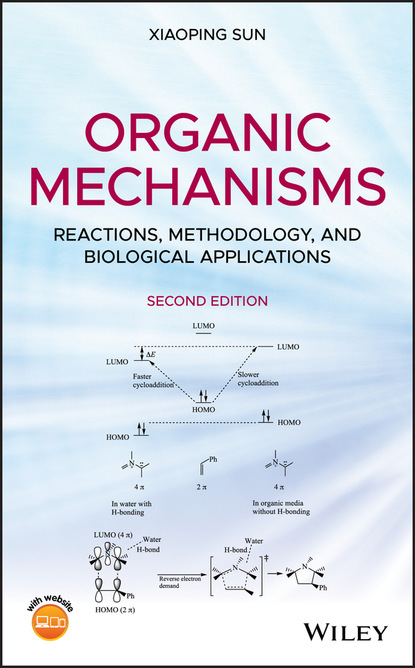Книга "Капиллярный электрофорез и микрочиповый капиллярный электрофорез" исследует преимущества и ограничения новейших методов капиллярного электрофореза. Капиллярный электрофорез и микрочиповый капиллярный электрофорез - мощные аналитические инструменты, особенно подходящие для разделения и анализа биомолекул. По сравнению с традиционными аналитическими методами, капиллярный электрофорез и микрочиповый капиллярный электрофорез обеспечивают высокую скорость анализа, малый расход проб и растворителей, низкую стоимость и возможность миниатюризации. В книге ведущие аналитические ученые объясняют, как исследователи могут в полной мере использовать все последние методики, делая акцент на областях применения, где капиллярный электрофорез продемонстрировал преимущества перед другими подходами. Авторы рассматривают не только преимущества каждой техники, но и ограничения, позволяя читателям выбрать наиболее подходящий метод анализа конкретной пробы. В 21 главе книги исследуются фундаментальные аспекты электрофоретических разделений, приборы, методы пробоподготовки, режимы разделения, системы детектирования, стратегии оптимизации методик и прикладные области применения. Каждая глава начинается с введения и заканчивается выводами, а также ссылками на первоисточники. Для начинающих это простое введение в основные методы капиллярного электрофореза, а для опытных специалистов - справочник по устранению проблем и продвинутым применениям.
Discusses the benefits and limits of recent capillary electrophoresis methods and микрочип Капиллярный электрофорез are powerful analytic instruments that are very effective in separating and analyzing biological molecules. In contrast to older analytical methods, capillary electrophorese and микрочиповый гема является feature of speed; small sample & solvents consumption; lower price; and opportunity of miniaturinization.With contributions from an organization of leading course scientific experts, Капиллярная электрофореза and микрочиповая инфузионная электрофореза explains how course researchers can gain all the advantages of these modern methods; emphasizes areas where capillary electromigration has demonstrated its superiority over alternate analytic strategies.The author doesn’t simply examine the benefits over each method, but also their limits so students can chose the optimized method for analyzing a specific sample.The book puts in twenty-1 chapters on fundamental parts of electropus drivers groupings, instrument designs, sampling methods, ways of separation, fixing systems, strategies of adaptation for generating methods, and approaches to solving problems in utilizing microchips electromigration for expanded surveillance applications.—Этот текст представлен в электроном виде. Поэтому актуализация данных невозможна. — В 2018 году книга вышла в электронном издании. Та же ситуация с серией книг издательства John Wiley & Sons "Analytical Methods in Food Analysis". Обновления о них нет.
Электронная Книга «Capillary Electrophoresis and Microchip Capillary Electrophoresis» написана автором Carlos D. García в году.
Минимальный возраст читателя: 0
Язык: Английский
ISBN: 9781118529980
Описание книги от Carlos D. García
Explores the benefits and limitations of the latest capillary electrophoresis techniques Capillary electrophoresis and microchip capillary electrophoresis are powerful analytical tools that are particularly suited for separating and analyzing biomolecules. In comparison with traditional analytical techniques, capillary electrophoresis and microchip capillary electrophoresis offer the benefits of speed, small sample and solvent consumption, low cost, and the possibility of miniaturization. With contributions from a team of leading analytical scientists, Capillary Electrophoresis and Microchip Capillary Electrophoresis explains how researchers can take full advantage of all the latest techniques, emphasizing applications in which capillary electrophoresis has proven superiority over other analytical approaches. The authors not only explore the benefits of each technique, but also the limitations, enabling readers to choose the most appropriate technique to analyze a particular sample. The book's twenty-one chapters explore fundamental aspects of electrophoretically driven separations, instrumentation, sampling techniques, separation modes, detection systems, optimization strategies for method development, and applications. Specific topics include: Critical evaluation of the use of surfactants in capillary electrophoresis Sampling and quantitative analysis in capillary electrophoresis Capillary electrophoresis with electrochemical detection Overcoming challenges in using microchip electrophoresis for extended monitoring applications Capillary electrophoresis of intact unfractionated heparin and related impurities Microchip capillary electrophoresis for in situ planetary exploration Each chapter begins with an introduction and ends with conclusions as well as references to the primary literature. Novices to the field will find this book an easy-to-follow introduction to core capillary electrophoresis techniques and methods. More experienced investigators can turn to the book for troubleshooting tips and expert advice to guide them through the most advanced applications.



















